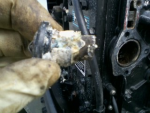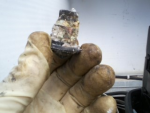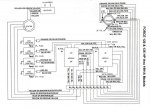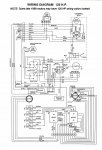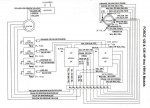21BaylinerCC
Seaman Apprentice
- Joined
- Jun 17, 2015
- Messages
- 48
I have a 1988 125hp force outboard that keeps over heating when I throttle up to around 3000 RPM.
I've checked compression... Cylinders 1-4. 140psi, 138 psi, 138psi, 138 psi, respectively.
I've checked the external temperature of the water jacket/cylinder head (127 degrees F), Thermoswitch (102 degress F), Exhaust plate (101 degrees F), and thermostat cover (105 degrees F), after the overheat buzzer sounds.
I replaced the thermostat and the thermoswitch. I flushed water up the intake tube and down through the thermostat housing - water flowed steadily. I also replaced the impeller - the previous impeller looked fine, but wanted to rule it out.
I also cleaned the carburetors and set the floats according to the US Marine shop manual.
I've done a link and sync, checked and set timing to the correct specifications based on the manual.
I notice cylinders 1 and 3 look to be wet fouled, which leads me to believe it could be the trigger (its the only commonality between cylinders 1 and 3, as they are triggered by the same colored wires from the trigger).
I am also contemplating removing and cleaning the fuel re-circulation system.
Anybody have any ideas?
I've checked compression... Cylinders 1-4. 140psi, 138 psi, 138psi, 138 psi, respectively.
I've checked the external temperature of the water jacket/cylinder head (127 degrees F), Thermoswitch (102 degress F), Exhaust plate (101 degrees F), and thermostat cover (105 degrees F), after the overheat buzzer sounds.
I replaced the thermostat and the thermoswitch. I flushed water up the intake tube and down through the thermostat housing - water flowed steadily. I also replaced the impeller - the previous impeller looked fine, but wanted to rule it out.
I also cleaned the carburetors and set the floats according to the US Marine shop manual.
I've done a link and sync, checked and set timing to the correct specifications based on the manual.
I notice cylinders 1 and 3 look to be wet fouled, which leads me to believe it could be the trigger (its the only commonality between cylinders 1 and 3, as they are triggered by the same colored wires from the trigger).
I am also contemplating removing and cleaning the fuel re-circulation system.
Anybody have any ideas?




















